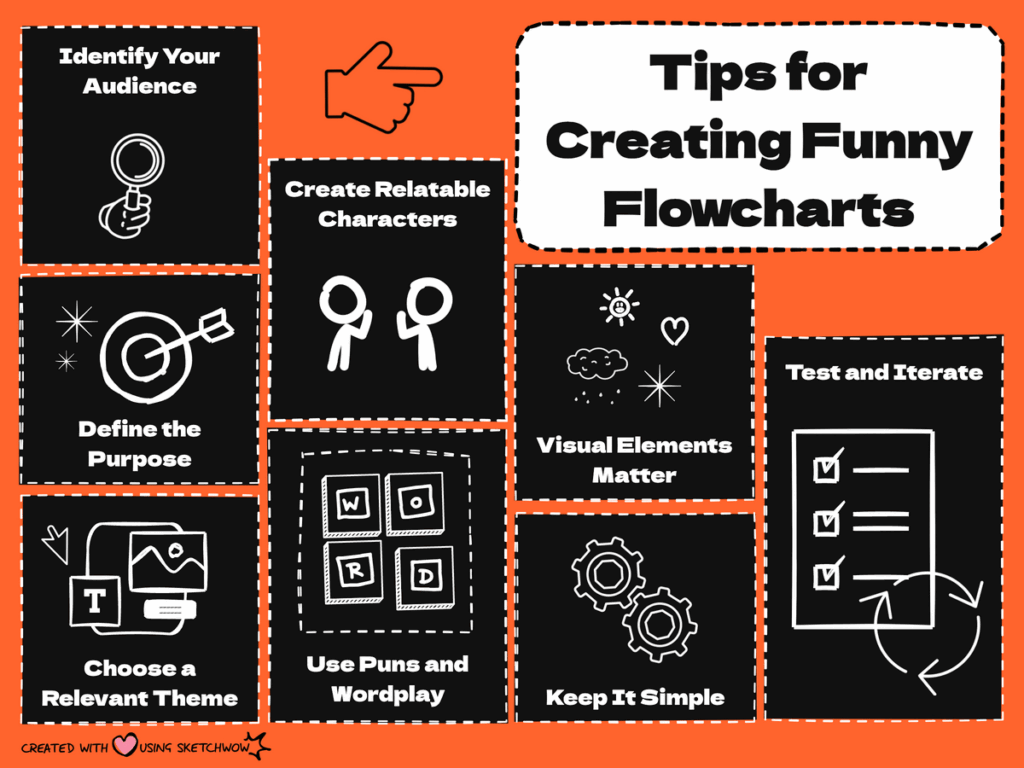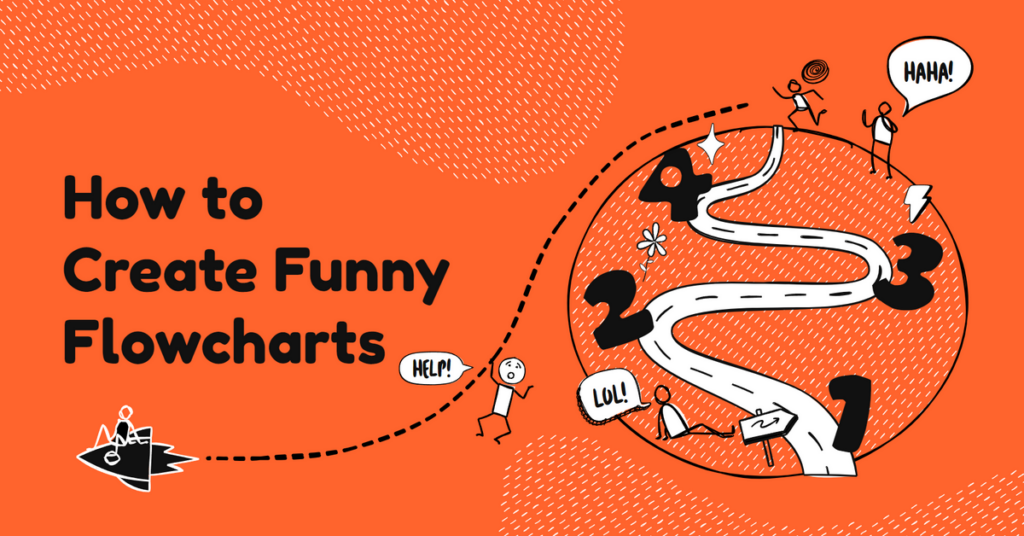The world of business, education, or project management is waaaay too serious as it is. Don’t add to all this dullness! Why not try something a bit different? Sometimes adding a light touch of humor is exactly what the Doctor ordered to cut-through-the-clutter and get attention. Injecting humor into your visual aids can not only make them more engaging but also leave a lasting impression on your audience. In this guide, we’ll explore the art of creating funny flowcharts and how you can master this unique form of visual communication.
Why Add Humor to Flowcharts?
Before diving into the process of creating funny flowcharts, let’s briefly explore why humor is a valuable addition to these traditionally formal diagrams.
- Engagement: Humor captures attention. By adding a touch of wit to your flowcharts, you’re more likely to engage your audience and ensure they absorb the information presented.
- Memorability: People tend to remember things that make them laugh. If your flowchart is memorable, it’s more likely to be cited and shared, making it more effective.
- Ease of Understanding: Humor can help simplify complex topics. Using relatable and amusing scenarios in your flowcharts can make even the most intricate processes more easily understandable.

Tips for Creating Funny Flowcharts
1. Identify Your Audience
Understand who will be viewing your flowchart. The humor should be tailored to resonate with your target audience, whether it’s colleagues, students, or clients.
2. Define the Purpose
Clearly define the purpose of your flowchart. Whether it’s explaining a process, decision-making, or problem-solving, having a well-defined objective will allow you to incorporate humor tastefully throughout.
3. Choose a Relevant Theme
Select a theme that aligns with the topic of your flowchart. Whether it’s office-related, educational, or project-specific, the theme sets the tone for the humor.
4. Create Relatable Characters
Introduce characters or personas that your audience can relate to. These could be fictional characters or simplified representations of real people, adding a personal touch to your flowchart.
5. Use Puns and Wordplay
Incorporate clever wordplay and puns. Humorous labels and descriptions can add a lighthearted touch to decision points or process steps.
6. Visual Elements Matter
Enhance the visual appeal of your flowchart with funny illustrations or cartoons. Visual humor can often convey ideas more effectively than text alone.
7. Keep It Simple
Avoid overly complex humor that might distract from the main message. The goal is to entertain without compromising clarity.
8. Test and Iterate
Before presenting your funny flowchart to a wider audience, test it with a small group. Gather feedback and be willing to make adjustments to improve both the humor and the overall effectiveness of the flowchart.
Why Create Funny Flowcharts?
Infusing humor into flowcharts transforms them from mundane diagrams into engaging and memorable visual experiences. Whether you’re a professional, educator, or project manager, the ability to convey information in a humorous manner can set you apart and make your communication more effective.
Experiment with themes, characters, and wordplay, and remember that the key is to balance humor with clarity. Most important? Don’t be a try-hard. Force-feeding your audience with a buffet of bad jokes and puns is not the way to go here. Keep things light and subtle. Less is more.
With the right approach, your funny flowcharts will leave a lasting impression and turn mundane process overviews into enjoyable learning experiences. When your audience starts paying more attention to your flowcharts… that’s no laughing matter!


